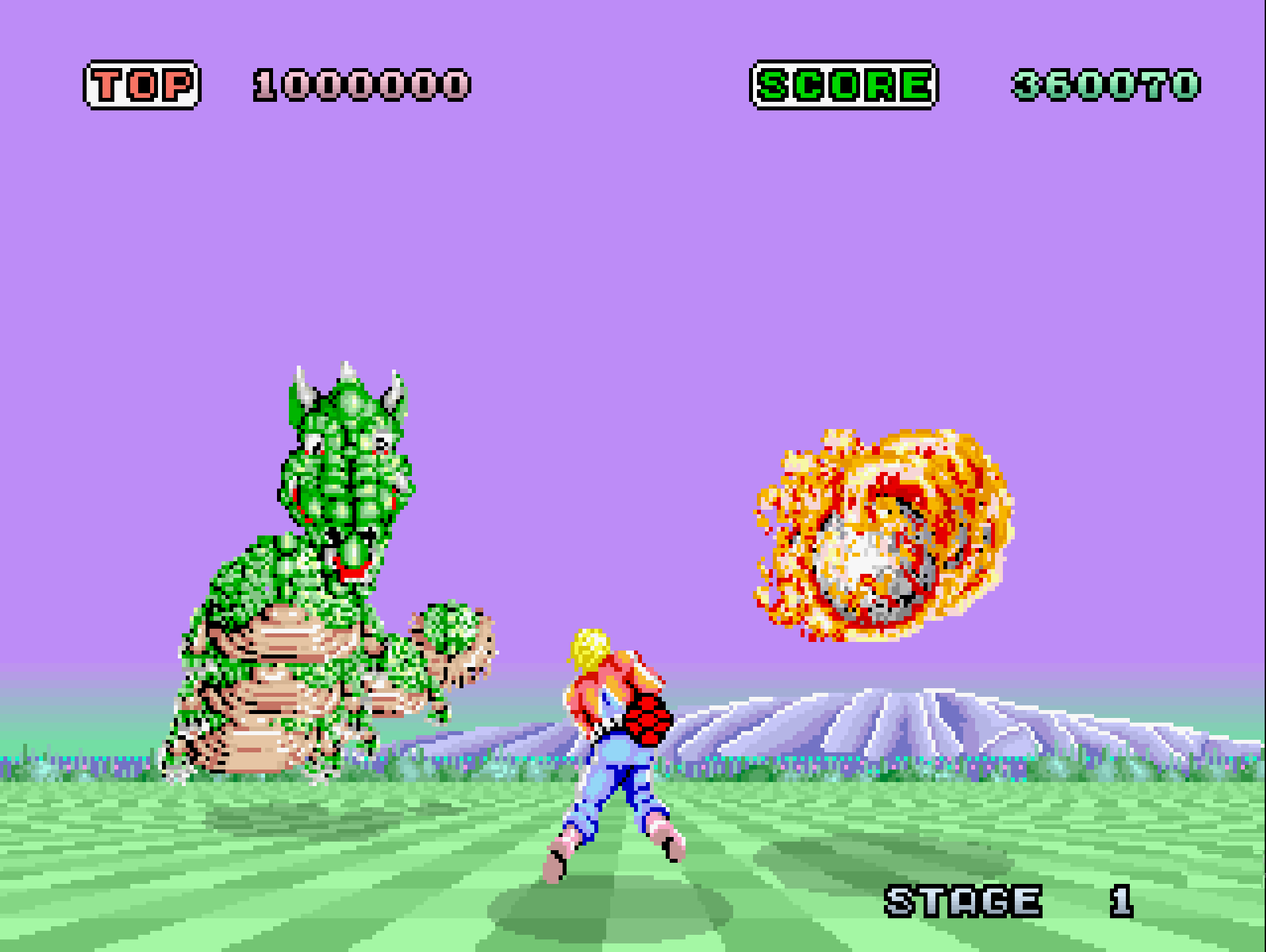Introduction
Released in 1985, Space Harrier is a third-person rail shooter developed by Sega and designed by legendary developer Yu Suzuki. One of the earliest arcade games to simulate 3D environments using sprite-scaling technology, it introduced players to fast-paced shooting action across psychedelic landscapes. Its surreal enemies, unforgettable soundtrack, and innovative cabinet design helped establish Sega as a premier force in arcade innovation.
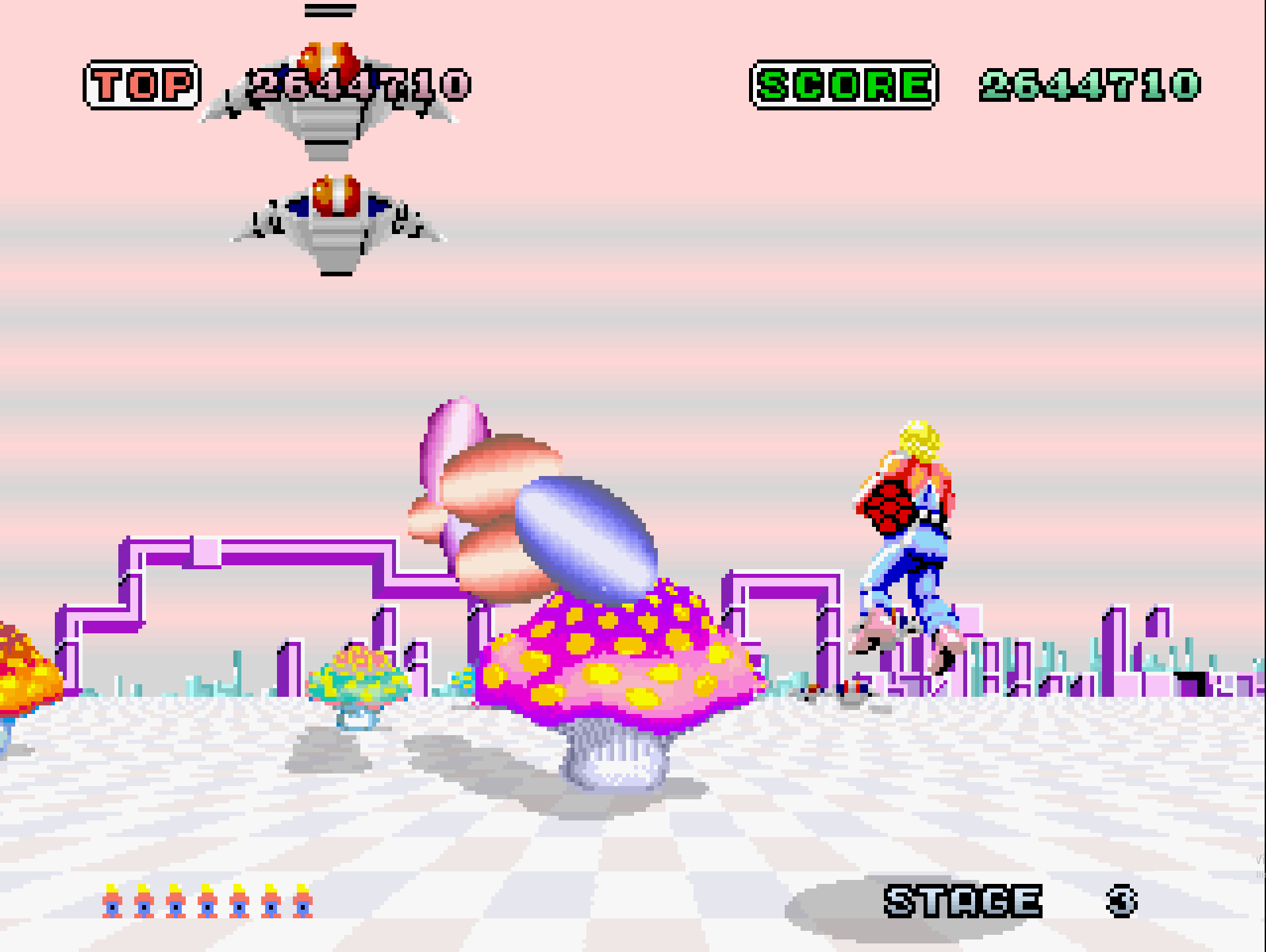
Development and History
- Developer: Sega AM2
- Publisher: Sega
- Release Date: November 1985 (Japan and worldwide)
Yu Suzuki originally envisioned Space Harrier as a jetpack shooter, but it evolved into a fantasy-themed experience inspired by anime and Western science fiction. It was developed on Sega’s “Super Scaler” arcade hardware, which enabled sprite scaling to create a sense of depth and speed. The deluxe arcade cabinet even featured a motorized seat that moved in sync with the on-screen action, enhancing immersion.
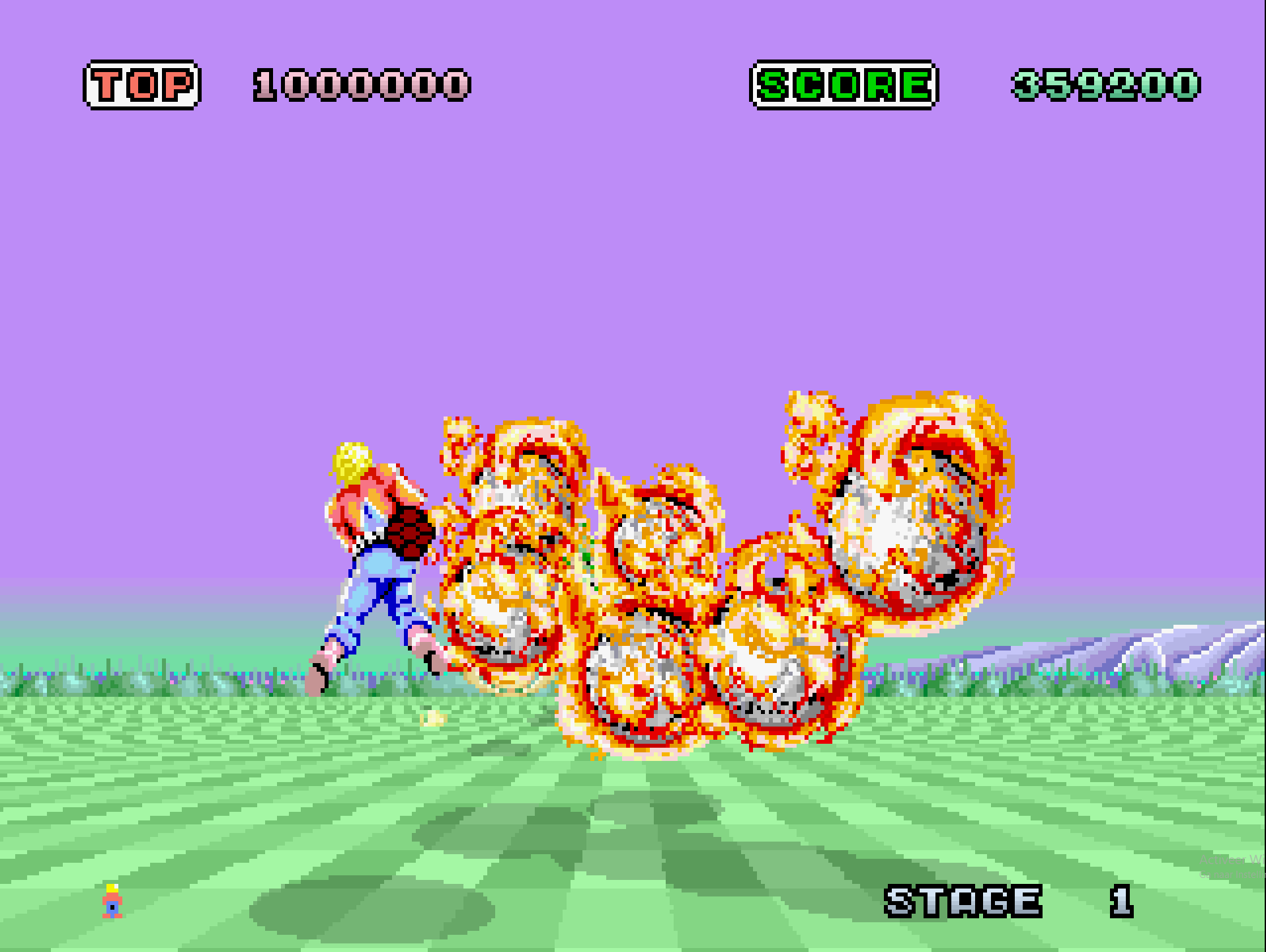
Gameplay Video
Gameplay and Mechanics
Core Gameplay
- Third-Person Rail Shooter: Players control the Harrier as he flies through oncoming enemies and obstacles.
- Full 8-Way Movement: Players can move anywhere on screen while the background scrolls forward automatically.
- One-Hit Death: Contact with enemies or terrain results in instant loss of life.
- Boss Fights: Each stage ends with a boss battle against massive creatures like dragons or robotic heads.
- Voice Samples: “Welcome to the Fantasy Zone!” became one of the most iconic voice lines in arcade history.
Enemies and Setting
- Enemies: Ranged from flying eyeballs and cyclopean robots to mammoth stone heads and dragons.
- Fantasy Zones: Brightly colored worlds filled with checkerboard terrain and surreal backdrops.
Challenges
- High-Speed Dodging: Players must navigate incoming enemy fire and terrain at breakneck speeds.
- No Continues (in some cabinets): Arcade mode meant memorization and mastery.
- Visual Clutter: The surreal graphics often obscured incoming threats, upping the difficulty.

Cultural Impact and Legacy
- Technical Marvel: Among the first games to deliver pseudo-3D visuals with sprite scaling.
- Cabinet Innovation: The moving seat model became a showpiece in arcades.
- Legacy Title: Inspired future Sega games like After Burner, Panzer Dragoon, and Rez.
- Home Ports: Released on Master System, Genesis, 32X, and many more platforms.
- Re-Releases: Included in Sega Ages collections and arcade emulations.
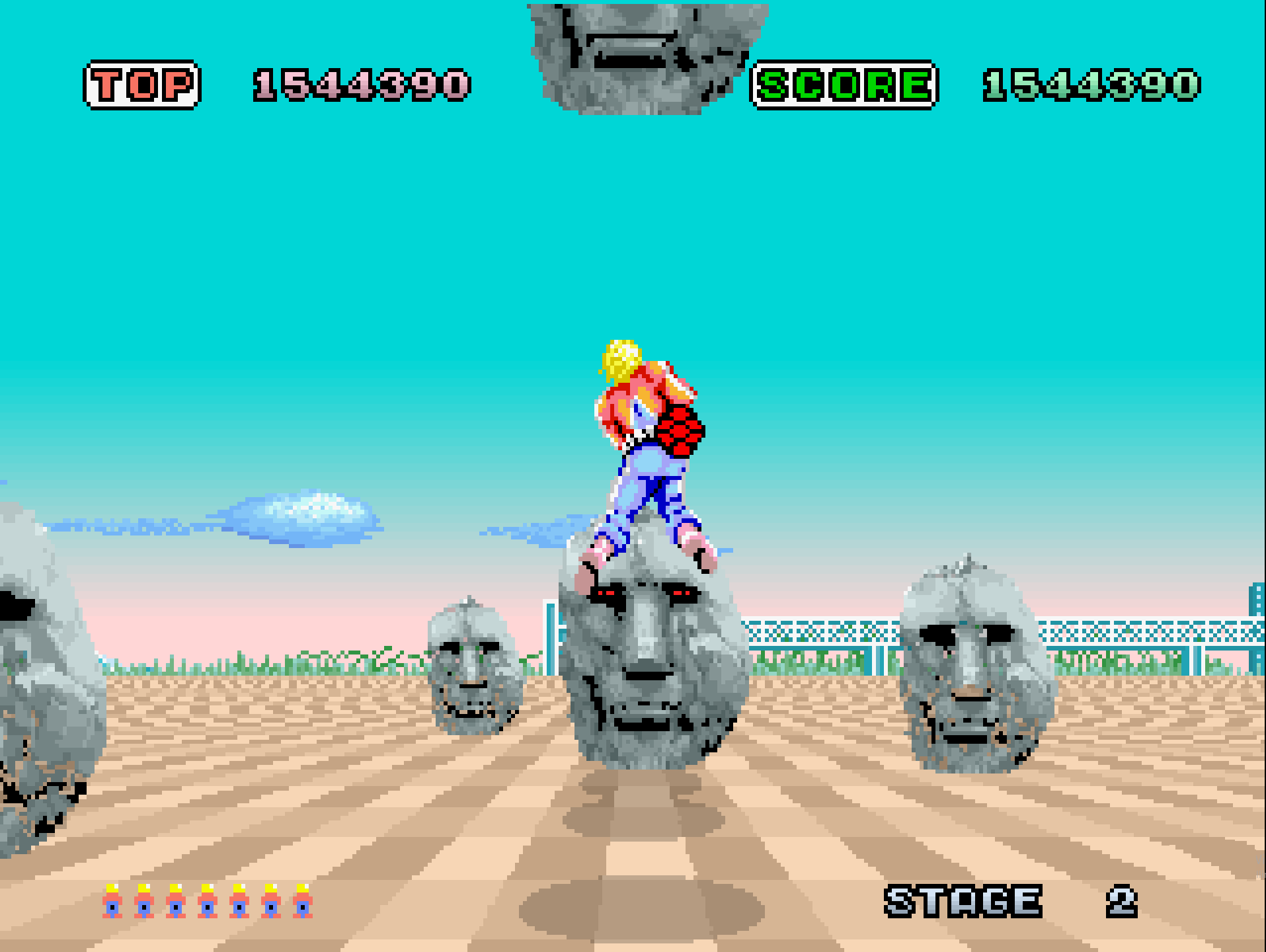
Fun Facts
- Originally Jet-Themed: Early development had a jetpack concept before becoming fantasy.
- Fantasy Zone Connection: Shares visual and musical DNA with Sega’s later Fantasy Zone series.
- Yu Suzuki Classic: Preceded his work on OutRun, After Burner, and Virtua Fighter.
- Hidden Warp Zones: Some stages contain warp tiles for bonus scores.
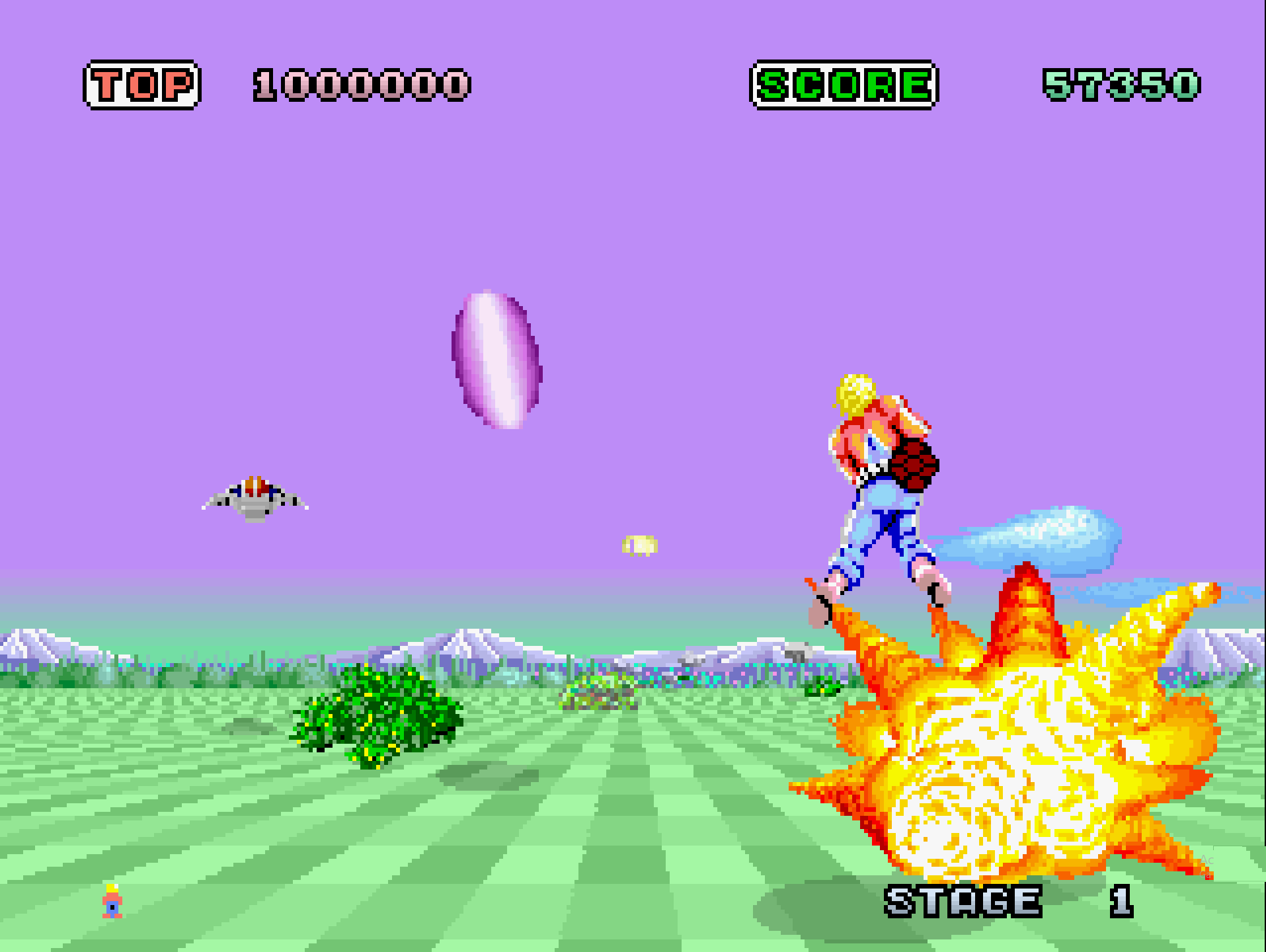
Conclusion
Space Harrier wasn’t just a technical feat—it was a visionary leap in game design. With its rapid-fire action, imaginative worlds, and genre-defining visuals, it remains a landmark title in arcade history. Decades later, it continues to influence game design and stand tall as one of Sega’s boldest and most enduring arcade experiences.

